
Interview with Smiljan Radić
The České Budějovice Gallery of Contemporary Art and Architecture is exhibiting the work of Chilean architect Smiljan Radić throughout May. On the occasion of the introductory lecture at the Student Church of the Holy Family and the opening of the exhibition Bestiary in the House of Art of the City of České Budějovice, archiweb.cz had the opportunity to conduct an interview with this unmistakable South American creator on Thursday, April 27, 2017.
Could you share with us what lies behind the global success of Chilean architecture in recent years? Chilean architect Alejandro Aravena won the Pritzker Prize last year and was the curator of the Venice Biennale. A year and a half ago, the Chilean architects Pezo von Ellrichshausen were guests in this gallery in České Budějovice.
This question could most likely be better answered by theorists or curators. I myself do not know. It is probably because the authors you mentioned do not operate as a single group united by a common idea. In the whole country, there are six or seven architects who, in my opinion, create quality buildings. Each, however, carries out their work in a different way. That is the most fascinating thing about today's Chilean scene, which certainly cannot be considered a movement. Our country does not have a deep architectural tradition. We do not have a tradition behind us, which can be considered an advantage that provides us with independence and freedom. We are not any organized group. The fact that quality architecture is thriving right now in Chile is more of a coincidence and could be happening anywhere else in the world. What is important to me is that it is not some construct of the media, but a reality from which a wave of young Chilean architects could genuinely develop in the future, who will have the freedom and opportunities like we do.
Yes, one cannot speak of a Chilean wave, as your work has a distinct artistic dimension, Pezo von Ellrichshausen follows a minimalist approach, and Alejandro Aravena is interested in social issues.
I consider this diversity to be a great feature of Chilean architecture. Everyone has the opportunity to engage with their topics that they truly understand.
You often collaborate on projects with your life partner, sculptor Marcela Correa. Can you describe in simple terms how this collaboration occurs and how it influences your work?
Of course, we do not have a fixed recipe. Each project is a bit different. We live in the same household, and both worlds cannot be completely separated, which does not mean that we only talk about work. I have been working on projects with Marcela since the very beginning of my architectural practice, and it feels completely natural to me. I find the interplay between art and architecture just as natural, for which I do not have much rational justification. Ideas often arise during lunch with children and friends, when we talk about various things outside the field of art or architecture. However, when the topic of this area comes up, we find a common language very easily. Marcela evaluates an object or structure in artistic terms, and I contribute to the architectural shape. I am not an artist. I consider myself an architect. I am clear about that. Artists think about their work without deeper connections to function or context in reality, which is beautiful when you can be nearby and observe this way of working.
In addition to your close connection with art, the source of your inspiration is equally unique, drawing from drawings and fairy tales.
Perhaps this sounds unusual today, but stories are part of architectural history. In the past, it was common for artists to interpret written stories and project them into their models or paintings. Just think of the Tower of Babel or Noah's Ark. We all know these objects well from biblical texts, yet no one knows exactly what they looked like until painters began to bring them onto canvas through their imagination. Architects materialized these stories in three dimensions, and I feel like a completely natural continuation of this history of representation. The exhibition showcases many of these sources of inspiration, which are encoded into the models. For some visitors to the exhibition, it may not be easy to decipher everything immediately, but I really feel at home among the models.
Sometimes you also peek into the world of other architects. You were loosely inspired by Le Corbusier's painting "Poem of the Right Angle" for your own house. It must be something very personal.
The inspiration is clearly apparent in Le Corbusier's lithograph number C2. It depicts a man's shelter from the inclement weather. In my design, I tried to translate this image into space. You can also find the image of the Boy Hidden in the Fish in my house, which was further developed into an object for the Venice Biennale. Each design comes with a number of strong references that are very helpful. Some of them are associated with the project from the very beginning; others come during the design process, and yet others only at the very end to help emphasize a certain part. Beyond the story, it is important for me to incorporate history into the object. I never think about a project purely from a functional standpoint of where it would be best to place a particular room, hall, or staircase.
After studying architecture in Chile, you decided to continue in Venice, later working in Greece.
At that time, it was not a targeted career-building effort. After graduating from school in Chile, I assessed that I could not start building because I really knew nothing about history or construction. I would learn about building by working in an architectural office, but when it came to architectural history, I had to leave Chile, as there were no quality courses available at that time. At that time, I bought the book De la vanguardia a la metrópoli (Manfredo Tafuri and Francesco Dal Co, Gustavo Gili, Barcelona 1972). When I finished it and looked at who wrote it, I found out that both authors were teaching at IUAV in Venice, so I decided to go study with them. There were no complex considerations about a city with a rich history or a connection to a prestigious university. I made that decision based on one publication. Everything happened out of a series of fortunate coincidences, which is the most beautiful thing about it all.
Besides Francesco Dal Co, have other teachers influenced your work?
In Venice, I met Giorgio Masino, who runs a small art gallery here, and we still collaborate on joint projects. Everything is based on friendship and passion for art rather than on a business or professional basis.
One is immediately struck by the duality in your work, where you combine heavy prehistoric boulders with translucent membranes in one object. How can you simultaneously work on these two different poles?
It is important to realize that the issue of material does not play a fundamental role. Material is perceived differently by each society. In this environment, a wooden structure can represent something entirely different than in Chile or other parts of the world. The experience of the building also depends on how one feels about it, how one inhabits it, and how the material is processed.
In Chile, stone represents something primitive and rather relates to natural geological periods than to the history of humanity. On the other hand, in Japan, stone has a symbolic significance, and it is very important where you place it, which is something we lack in Chile. The same stone can create completely different realities. I only want to point out that the same material does not always carry the same meaning. Therefore, when I choose the appropriate material for a building in Chile, it must have some relationship with its surroundings and future users.
In construction, I use both lightweight and heavy elements, but I do not perceive it as duality because both help to achieve a single goal. I perceive their essence and not the material composition.
In my projects, I like using sails. Thanks to new technologies, textile can be used safely as a permanent construction element for the last thirty or forty years, but Chileans still associate it with its weaknesses, which no longer apply, but socially and culturally they have in mind that sails cannot be used permanently. The same applies to stone, which immediately brings a person back to prehistory, geological ties, and unspoiled nature. However, when you place a stone into a new object, the building automatically ages. It gains years. I do not know how it is possible. Many people place boulders in parks, creating romantic sculptures, pavilions, or caves, as they give you the feeling that they have come from ancient history, which is a bit amusing. In the end, it always depends on how each person interprets it, but I perceive it this way.
Sometimes I use stone as a construction element; sometimes, it serves as an artistic installation. It always depends on the specific project. I do not adhere to any specific rule. Two years ago, I vowed that I would no longer use stone. I placed the last stone, and that’s it. I do not want to be associated only with stone architecture.
Your family arrived in Chile from the Croatian island of Brač nearly a hundred years ago; nevertheless, you still talk about immigrants in your lectures and work with nomadic motifs in your projects. How can the feeling of a refugee persist in today's generation, who have already been born in Chile?
Without a doubt, I feel like a Chilean, but I still have to spell my last name at offices because it does not sound Spanish at all. The issue of migration is particularly sensitive today. Refugees had to leave everything behind at home, and the only thing they took with them are their memories. When they come to their new home, such as Chile was for my ancestors, they want to maintain themselves, establish new bonds with the local society and landscape. All their steps had to be well thought out and useful. They had to live with memories of their original homeland while simultaneously creating new functional ties. In this difficult situation, a unique character is born, which I would like to reflect in my buildings. To be very practical for contemporary life on one hand, but at the same time encoded with memories from a distant history.
This question could most likely be better answered by theorists or curators. I myself do not know. It is probably because the authors you mentioned do not operate as a single group united by a common idea. In the whole country, there are six or seven architects who, in my opinion, create quality buildings. Each, however, carries out their work in a different way. That is the most fascinating thing about today's Chilean scene, which certainly cannot be considered a movement. Our country does not have a deep architectural tradition. We do not have a tradition behind us, which can be considered an advantage that provides us with independence and freedom. We are not any organized group. The fact that quality architecture is thriving right now in Chile is more of a coincidence and could be happening anywhere else in the world. What is important to me is that it is not some construct of the media, but a reality from which a wave of young Chilean architects could genuinely develop in the future, who will have the freedom and opportunities like we do.
Yes, one cannot speak of a Chilean wave, as your work has a distinct artistic dimension, Pezo von Ellrichshausen follows a minimalist approach, and Alejandro Aravena is interested in social issues.
I consider this diversity to be a great feature of Chilean architecture. Everyone has the opportunity to engage with their topics that they truly understand.
You often collaborate on projects with your life partner, sculptor Marcela Correa. Can you describe in simple terms how this collaboration occurs and how it influences your work?
Of course, we do not have a fixed recipe. Each project is a bit different. We live in the same household, and both worlds cannot be completely separated, which does not mean that we only talk about work. I have been working on projects with Marcela since the very beginning of my architectural practice, and it feels completely natural to me. I find the interplay between art and architecture just as natural, for which I do not have much rational justification. Ideas often arise during lunch with children and friends, when we talk about various things outside the field of art or architecture. However, when the topic of this area comes up, we find a common language very easily. Marcela evaluates an object or structure in artistic terms, and I contribute to the architectural shape. I am not an artist. I consider myself an architect. I am clear about that. Artists think about their work without deeper connections to function or context in reality, which is beautiful when you can be nearby and observe this way of working.
In addition to your close connection with art, the source of your inspiration is equally unique, drawing from drawings and fairy tales.
Perhaps this sounds unusual today, but stories are part of architectural history. In the past, it was common for artists to interpret written stories and project them into their models or paintings. Just think of the Tower of Babel or Noah's Ark. We all know these objects well from biblical texts, yet no one knows exactly what they looked like until painters began to bring them onto canvas through their imagination. Architects materialized these stories in three dimensions, and I feel like a completely natural continuation of this history of representation. The exhibition showcases many of these sources of inspiration, which are encoded into the models. For some visitors to the exhibition, it may not be easy to decipher everything immediately, but I really feel at home among the models.
Sometimes you also peek into the world of other architects. You were loosely inspired by Le Corbusier's painting "Poem of the Right Angle" for your own house. It must be something very personal.
The inspiration is clearly apparent in Le Corbusier's lithograph number C2. It depicts a man's shelter from the inclement weather. In my design, I tried to translate this image into space. You can also find the image of the Boy Hidden in the Fish in my house, which was further developed into an object for the Venice Biennale. Each design comes with a number of strong references that are very helpful. Some of them are associated with the project from the very beginning; others come during the design process, and yet others only at the very end to help emphasize a certain part. Beyond the story, it is important for me to incorporate history into the object. I never think about a project purely from a functional standpoint of where it would be best to place a particular room, hall, or staircase.
After studying architecture in Chile, you decided to continue in Venice, later working in Greece.
At that time, it was not a targeted career-building effort. After graduating from school in Chile, I assessed that I could not start building because I really knew nothing about history or construction. I would learn about building by working in an architectural office, but when it came to architectural history, I had to leave Chile, as there were no quality courses available at that time. At that time, I bought the book De la vanguardia a la metrópoli (Manfredo Tafuri and Francesco Dal Co, Gustavo Gili, Barcelona 1972). When I finished it and looked at who wrote it, I found out that both authors were teaching at IUAV in Venice, so I decided to go study with them. There were no complex considerations about a city with a rich history or a connection to a prestigious university. I made that decision based on one publication. Everything happened out of a series of fortunate coincidences, which is the most beautiful thing about it all.
Besides Francesco Dal Co, have other teachers influenced your work?
In Venice, I met Giorgio Masino, who runs a small art gallery here, and we still collaborate on joint projects. Everything is based on friendship and passion for art rather than on a business or professional basis.
One is immediately struck by the duality in your work, where you combine heavy prehistoric boulders with translucent membranes in one object. How can you simultaneously work on these two different poles?
It is important to realize that the issue of material does not play a fundamental role. Material is perceived differently by each society. In this environment, a wooden structure can represent something entirely different than in Chile or other parts of the world. The experience of the building also depends on how one feels about it, how one inhabits it, and how the material is processed.
In Chile, stone represents something primitive and rather relates to natural geological periods than to the history of humanity. On the other hand, in Japan, stone has a symbolic significance, and it is very important where you place it, which is something we lack in Chile. The same stone can create completely different realities. I only want to point out that the same material does not always carry the same meaning. Therefore, when I choose the appropriate material for a building in Chile, it must have some relationship with its surroundings and future users.
In construction, I use both lightweight and heavy elements, but I do not perceive it as duality because both help to achieve a single goal. I perceive their essence and not the material composition.
In my projects, I like using sails. Thanks to new technologies, textile can be used safely as a permanent construction element for the last thirty or forty years, but Chileans still associate it with its weaknesses, which no longer apply, but socially and culturally they have in mind that sails cannot be used permanently. The same applies to stone, which immediately brings a person back to prehistory, geological ties, and unspoiled nature. However, when you place a stone into a new object, the building automatically ages. It gains years. I do not know how it is possible. Many people place boulders in parks, creating romantic sculptures, pavilions, or caves, as they give you the feeling that they have come from ancient history, which is a bit amusing. In the end, it always depends on how each person interprets it, but I perceive it this way.
Sometimes I use stone as a construction element; sometimes, it serves as an artistic installation. It always depends on the specific project. I do not adhere to any specific rule. Two years ago, I vowed that I would no longer use stone. I placed the last stone, and that’s it. I do not want to be associated only with stone architecture.
Your family arrived in Chile from the Croatian island of Brač nearly a hundred years ago; nevertheless, you still talk about immigrants in your lectures and work with nomadic motifs in your projects. How can the feeling of a refugee persist in today's generation, who have already been born in Chile?
Without a doubt, I feel like a Chilean, but I still have to spell my last name at offices because it does not sound Spanish at all. The issue of migration is particularly sensitive today. Refugees had to leave everything behind at home, and the only thing they took with them are their memories. When they come to their new home, such as Chile was for my ancestors, they want to maintain themselves, establish new bonds with the local society and landscape. All their steps had to be well thought out and useful. They had to live with memories of their original homeland while simultaneously creating new functional ties. In this difficult situation, a unique character is born, which I would like to reflect in my buildings. To be very practical for contemporary life on one hand, but at the same time encoded with memories from a distant history.
The English translation is powered by AI tool. Switch to Czech to view the original text source.
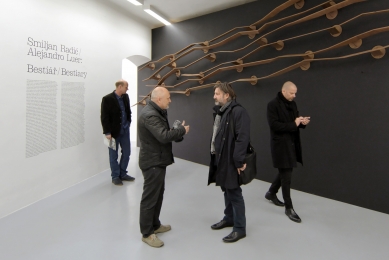
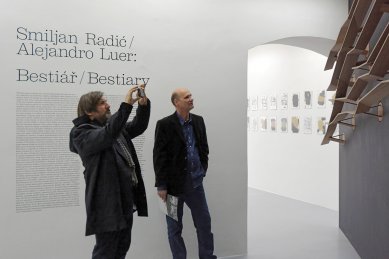
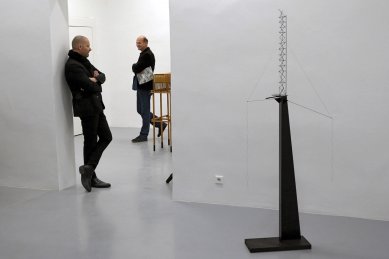
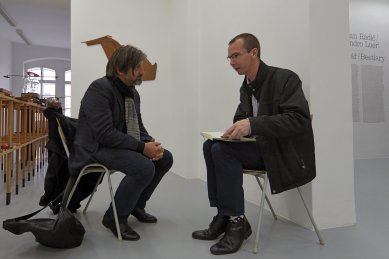
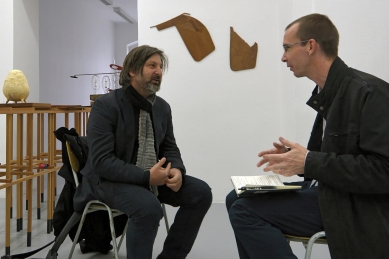
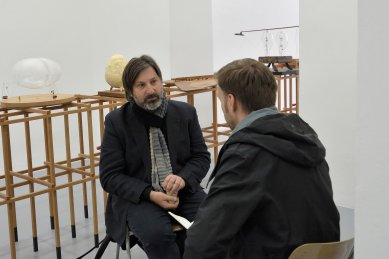
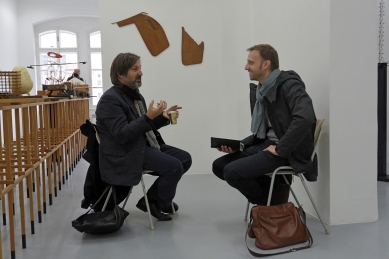
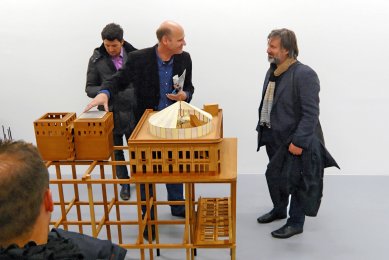
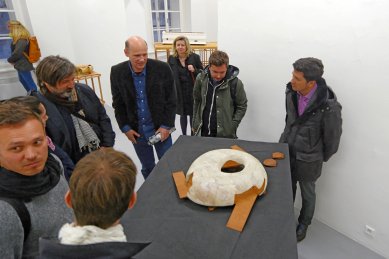
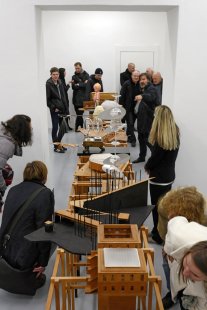
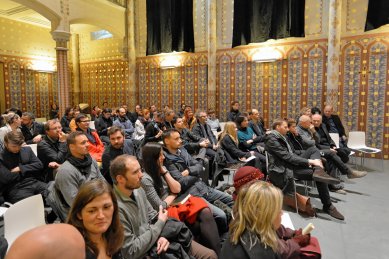
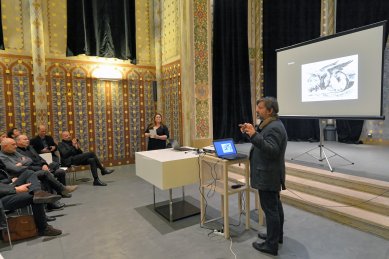
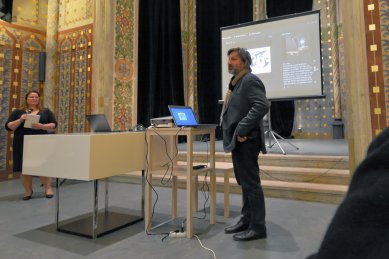
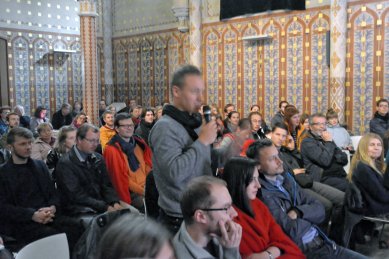
0 comments
add comment
Related articles
0
15.04.2019 | In Boskovice, a building designed by Smiljan Radić could arise
0
11.04.2019 | Urban Talks: Smiljan Radić
0
01.05.2017 | Chilean Bestiary - for the exhibition of Smiljan Radić in České Budějovice
0
27.04.2017 | Smiljan Radić: Bestiary - Invitation to the Lecture and Vernissage
0
13.03.2014 | The author of the Serpentine Gallery summer pavilion 2014 will be Smiljan Radic









